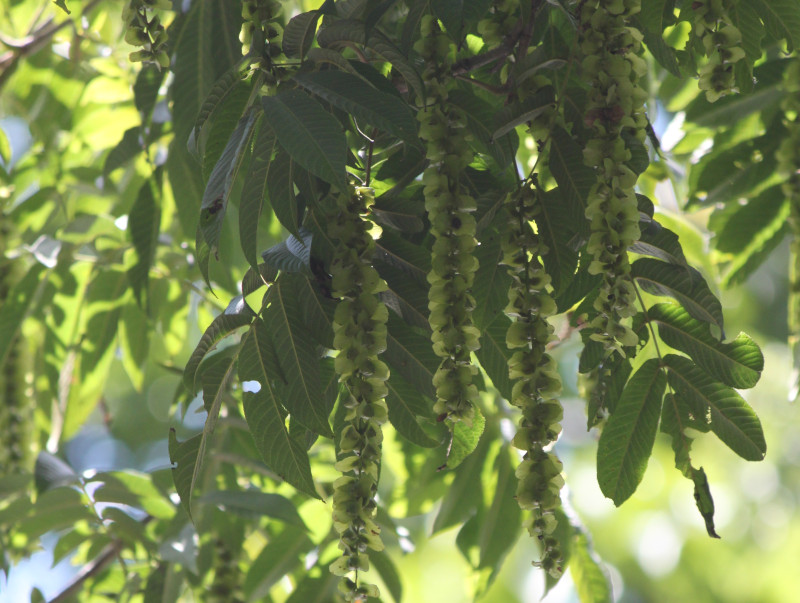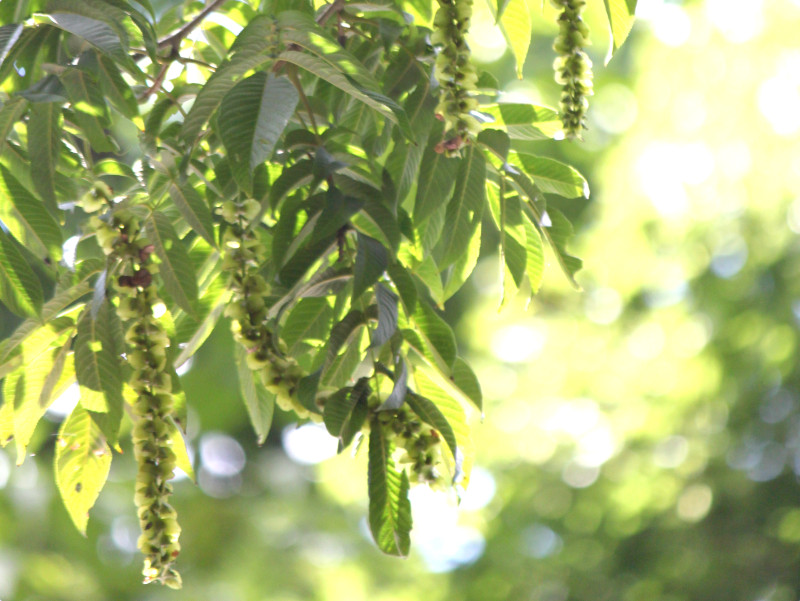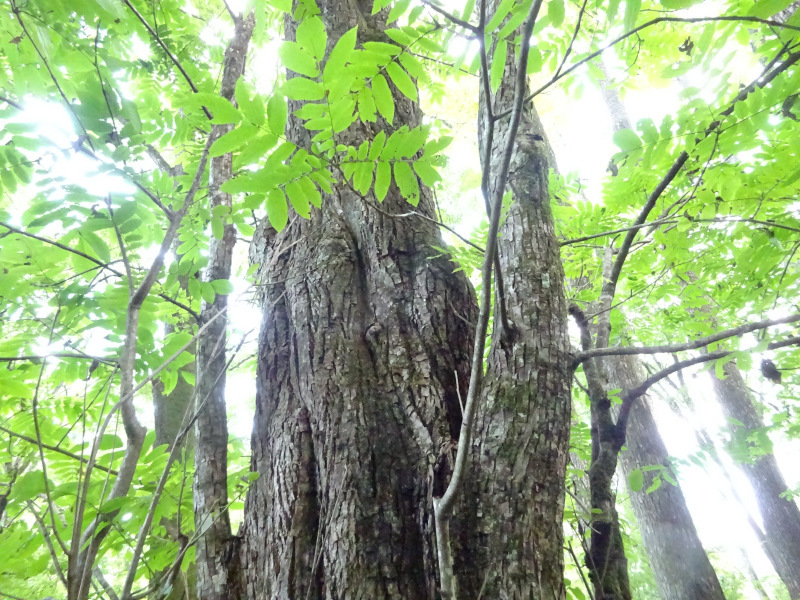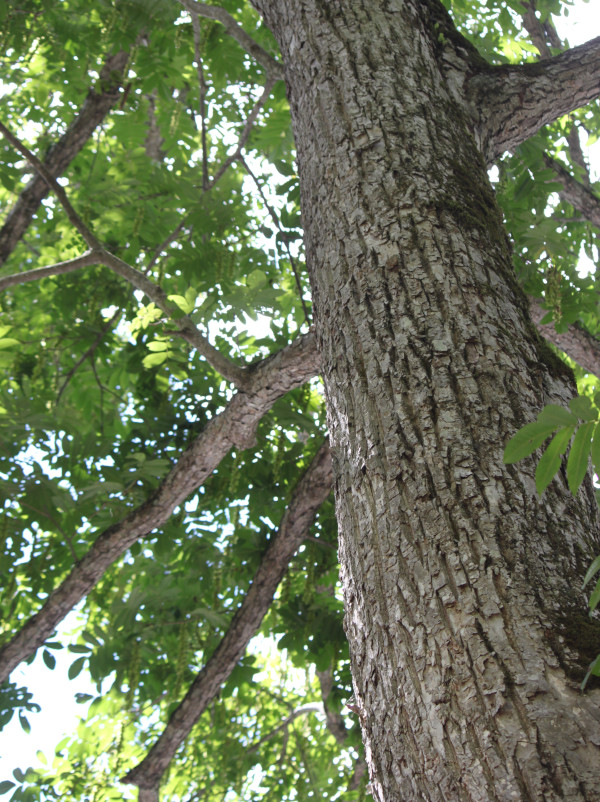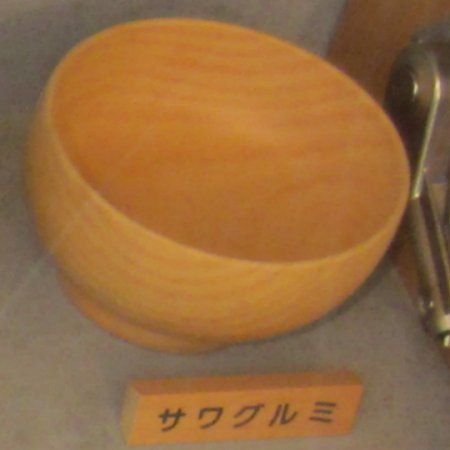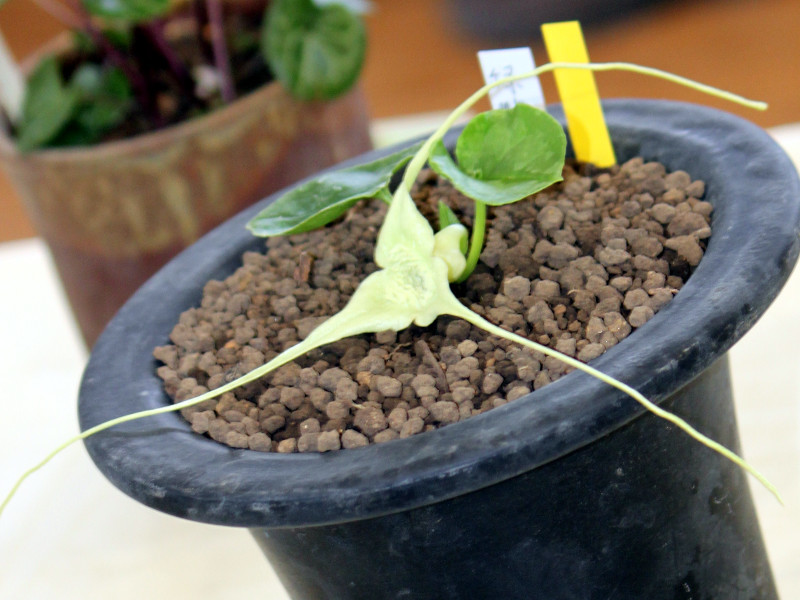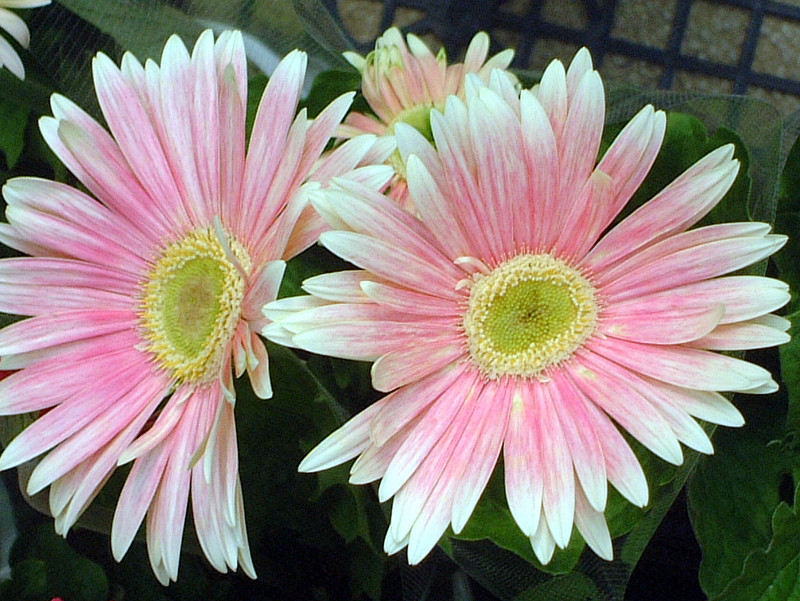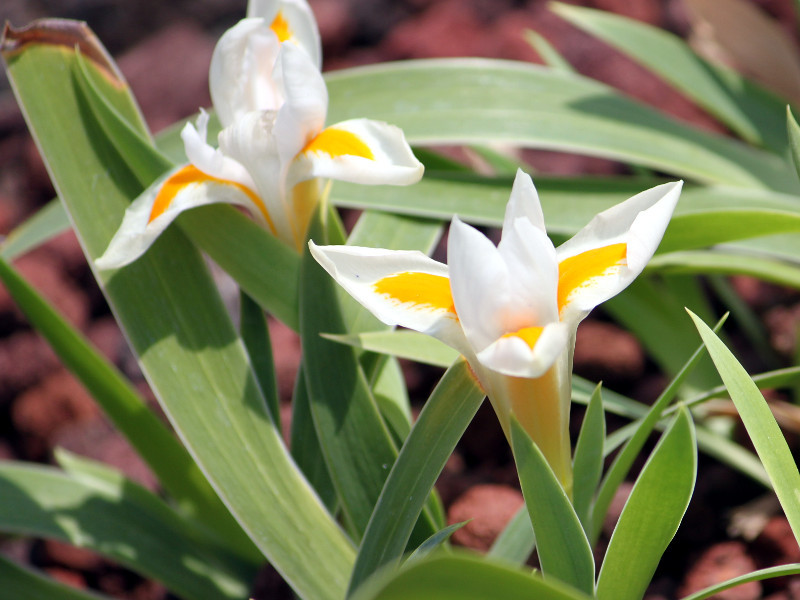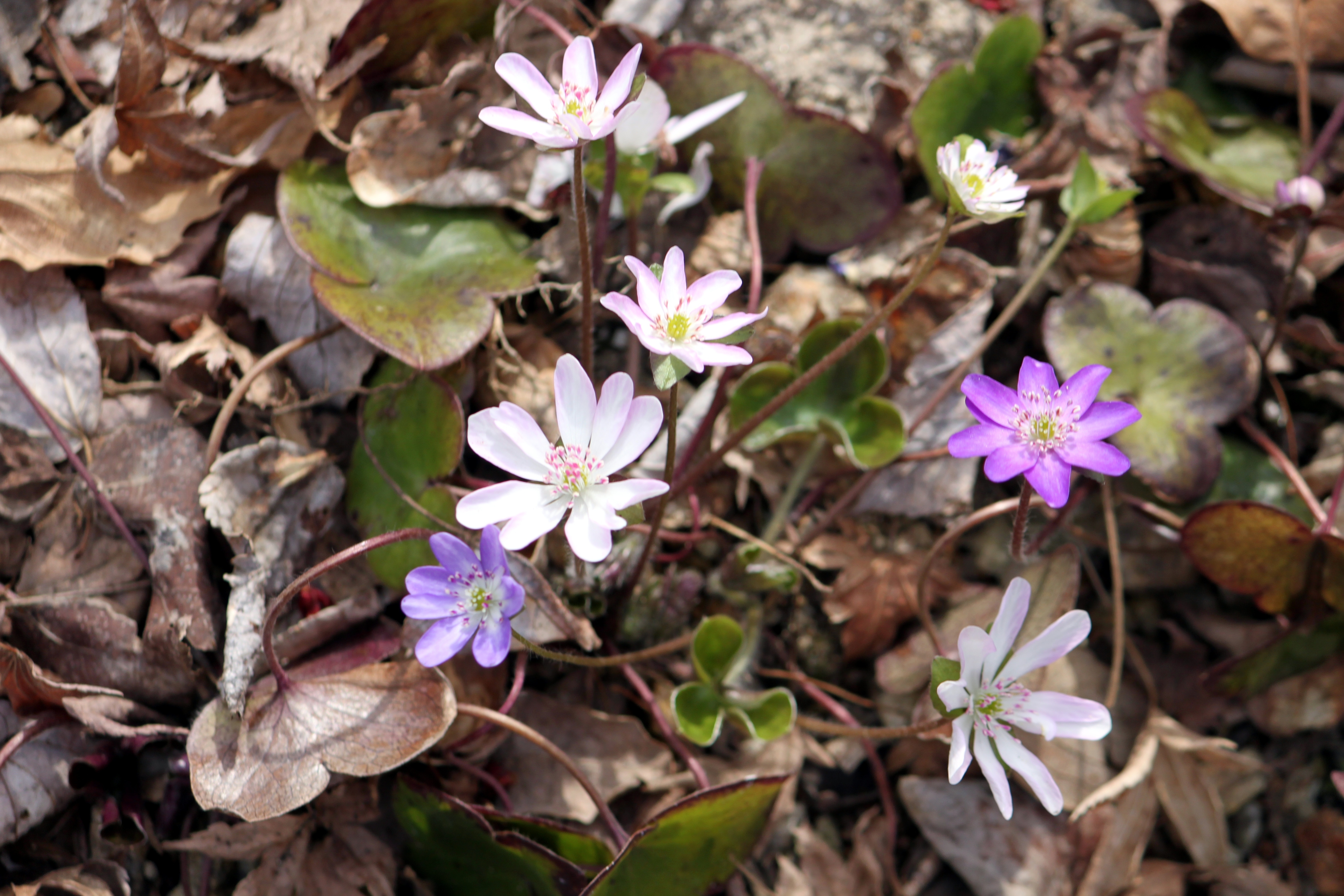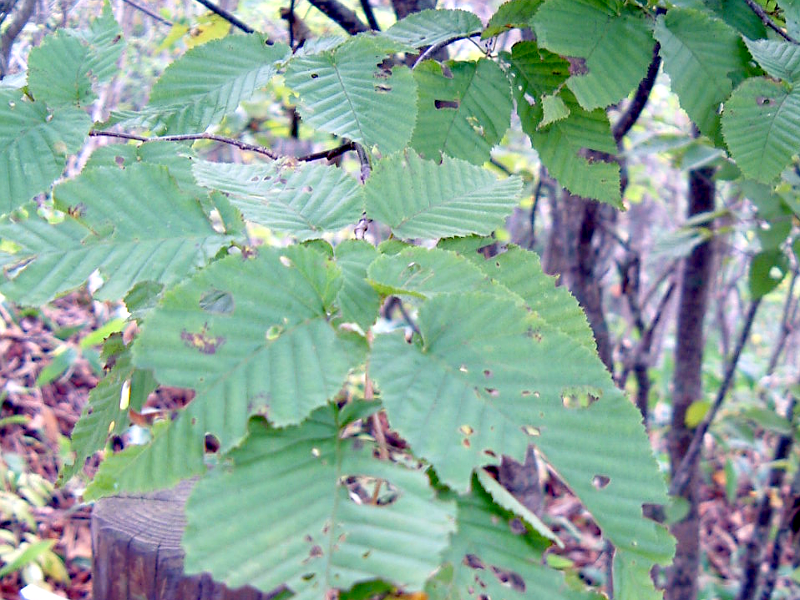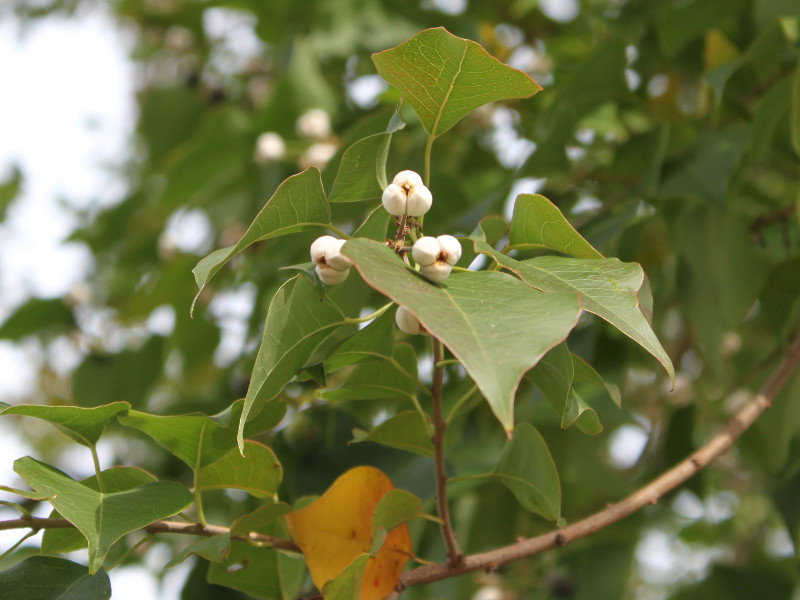Pterocarya rhoifolia
- Flower namePterocarya rhoifolia
- Scientific namePterocarya rhoifolia
- Aliasヤマギリ, 沢胡桃, 山桐, Japanese Wingnut
- Place of originJapan and China
- Place of floweringLow mountains, Sub-alpine
- Flowering seasonMay, June
What is Pterocarya rhoifolia
Pterocarya rhoifolia, Japanese Wingnut or Sawagurumi (scientific name: Pterocarya rhoifolia) is native to Japan and China, and is deciduous trees of the family Juglandoideae. It inhabits the valley lines of the mountains throughout Japan from Hokkaido to Kyushu. It becomes a big tree, the trunk is a straight line, the tree shape is beautiful in shape. The bark is dark gray, there are slightly deep clefts, and it gets peeled off as the age passes. There are no petioles, the leaves are odd feather-like compound leaves and are attached to each other, leaves have fine serrated teeth. It is a male and female strain, a sexual different flower, and it drips a light yellow-green caterpillar inflorescence from April to June. There are no petals. Nectar is formed after flowers. Wood is soft and light, material color is light yellowish white. Trees are used for trees to plant trees, wood is used for processing tools such as buildings, tubs and wood, matching axes, clogs, and pulp. The origin of the name comes from walnut tree that grows along the lake.
Generic name: Pterocarya rhoifolia, Japanese Wingnut or Sawagurumi, Scientific name: Pterocarya rhoifolia, aka: Japanese Wingnut, Yamagiri (mountain tung), Kawagurumi (river walnut), Place of origin: Japan and China, distribution distribution: Hokkaido ~ Kyushu's nationwide living environment: shadow of valley muscle of mountain region · wetland, lifestyle: deciduous trees, crown: egg-like sphere, tree shape: trunk straight and limestone beautiful , Tree height: 30 m Bark color: dark gray, bark state: passing through the age with a slight deep cleft and peeling off, leaf shape: odd feather-like compound leaves, leaves: alternate, leaf margin: fine tooth tooth, petiole: none, : No, male and female: female and male strains, diabetic flowers, inflorescence form: caudate inflorescences, flower color: light yellowish green, petals: no, flowering period: May to June, fruits: nuts, fruit diameters: 0.8 cm, fruiting Period: after flowers, wood: soft and light, material color: light yellowish white, use: trees planted in a mountainous area , Wood building, tub and wood shavings, match-axis, processing device, such as a shoe, to the pulp, the name derived: from the fact that grows in the swamp along, Features: become tall tree.
